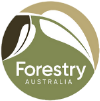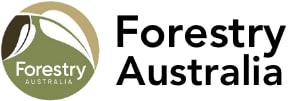
Fire Intensity, Fire Severity and Fire Risk
The terms fire intensity, fire severity and fire risk have quite different meanings, but they are sometimes used incorrectly when describing the predisposition of various forest settings to bushfire, as well as the nature and impacts of bushfires in the landscape. In each case, there are multiple factors that affect variations in fire intensity, fire severity and fire risk. The nature of each of these there terms is described below.
Fire Intensity
Fire intensity describes the physical combustion process of energy released from the burning of organic matter during a prescribed fire or bushfire. It measures the rate of heat output (energy released) per unit length of fireline and is expressed as kilowatts per metre of fire edge. It is difficult to measure as it can only be measured in the field during a fire event. The three factors used to measure fire intensity are the heat yield of the fuel consumed, the amount of fuel consumed and the rate of spread of the fire at a point on the fire edge. Fire intensity varies significantly within a fire depending on fuel quantity, prevailing weather and position around the fire perimeter.
Fire Severity
Fire severity, sometimes referred to as burn severity, attempts to measure how fire has affected human and environmental elements. It is a function of fire intensity, fire residence time and the prevailing soil and plant dryness. Fire severity is also directly influenced by vegetation type and structure, position within the fire spread pattern, topography, aspect and the prevailing weather conditions. Fire severity is generally determined after the fact from analysis of arial photography or satellite imagery, with severity usually being classified according to the degree of fire impact on the vegetation canopy. Therefore, a high severity fire is not necessarily a high intensity fire. Using this method, under any given fire intensity, shorter trees or shrubs are more likely to be classified as severely burnt than taller trees, due to the fact that their canopy is closer to the flames.
Fire Risk
Fire risk covers the likelihood of a fire starting, spreading and impacting on people, property and the environment. The risk of a fire starting depends on the presence of an ignition agent which can be human-related, both accidental or intentional, or natural, such as lightning. The risk of a fire spreading depends on the prevailing weather conditions, the available fuel and the effectiveness of any fire suppression actions. The risk of any fire impacting negatively on important values depends on the proximity of its location to the value, the current and predicted fire behaviour and the vulnerability or sensitivity of the asset or value to fire.

